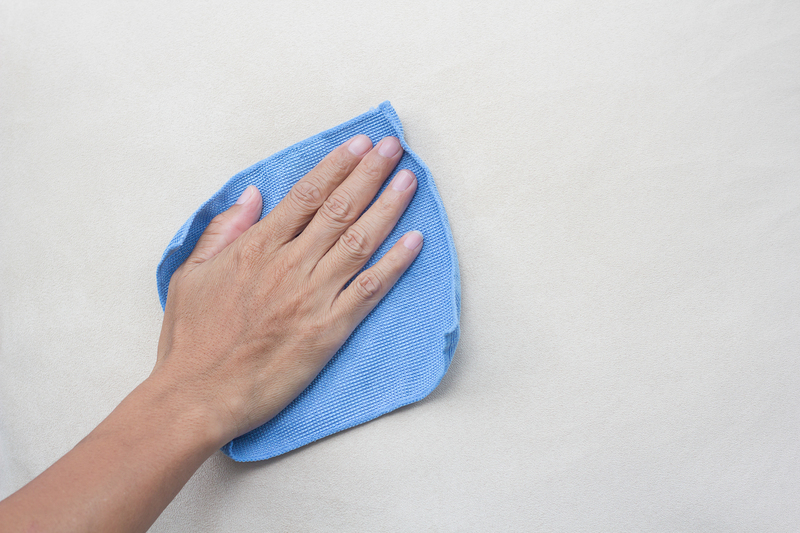Building a Resilient, Mold-Free Bathroom Space
Posted on 01/07/2025
Building a Resilient, Mold-Free Bathroom Space: The Ultimate Guide
Creating a durable, resilient bathroom that stands the test of time and remains free of mold is crucial for any home. With high humidity levels, frequent water exposure, and limited ventilation, bathrooms are prime breeding grounds for mold and mildew. However, with modern construction methods, carefully chosen materials, and good maintenance, you can enjoy a long-lasting, healthy, and mold-resistant bathroom.
Why Focus on Mold Prevention in Bathrooms?
Mold is not just an unsightly nuisance - it poses serious health and structural risks. When left unchecked, mold growth can damage paint, drywall, tiles, and even underlying building structures. More importantly, exposure to mold spores has been linked to allergic reactions, asthma flare-ups, and other respiratory issues. That's why building a mold-resistant bathroom is a must for every homeowner.
- Protects family health by minimizing exposure to mold spores and other allergens.
- Preserves property value by preventing long-term water damage and expensive repairs.
- Ensures a fresh, clean appearance for a more enjoyable bathroom experience.
- Reduces maintenance and cleaning effort over time.

Understanding the Causes of Mold in Bathrooms
Before learning how to build a resilient, mold-free bathroom space, it's important to understand what causes mold to thrive in this environment.
- Humidity and Steam: Showers, baths, and even running sinks introduce moisture into the air, creating a perfect habitat for mold and mildew.
- Inadequate Ventilation: Poor airflow leaves moisture lingering on surfaces, where mold colonies can quickly develop.
- Leaks and Water Intrusion: Cracks, faulty seals, and plumbing leaks can cause water to seep into walls, floors, and hidden spaces, further encouraging mold growth.
- Poor Cleaning Practices: Neglecting regular cleaning allows grime and biofilm to build up, providing surfaces for spores to attach and multiply.
Step-by-Step Strategies for a Mold-Free Bathroom Design
The key to a resilient bathroom is prevention. Let's examine the best practices for creating a space that stands up to moisture and resists the formation of mold.
1. Prioritize Proper Ventilation
The cornerstone of a mold-resistant bathroom is excellent ventilation. This ensures that wet air escapes, reducing lingering moisture on walls and fixtures.
- Install a High-Quality Exhaust Fan: Choose a fan rated for your bathroom size, and use it during (and at least 20 minutes after) every shower or bath.
- Consider an Automatic Humidity Sensor: Modern exhaust fans can be equipped with sensors that turn the fan on when humidity rises.
- Open Windows Whenever Possible: If your bathroom has a window, open it to allow natural ventilation and crossflow.
- Keep Interior Doors Slightly Ajar: Cracking the door lets moisture escape more easily after bathing.
2. Use Mold-Resistant Materials and Finishes
Selecting the right materials is one of the easiest ways to prevent mold in your bathroom. Opt for surfaces that repel water, inhibit microbial growth, and clean easily.
- Ceramic, Porcelain, or Glass Tiles: These materials are non-porous, easy to sanitize, and highly water-resistant.
- Waterproof Backer Boards: Use cement board or other waterproof alternatives behind tiles instead of traditional drywall.
- Mold-Resistant Paint: Choose paints labeled as "mold and mildew resistant" for walls and ceilings.
- Solid-Surface or Stone Countertops: Engineered stone and solid surface counters resist moisture penetration better than laminate or wood.
- Well-Sealed Grout and Caulk: Use mold-inhibiting additives in grout and reapply caulk annually to prevent water from seeping behind tiles.
3. Address Leaks and Water Damage Immediately
Even the most well-designed bathroom will fail if leaks go unchecked. Water intrusion is the enemy of a mold-free space.
- Inspect plumbing fixtures regularly for drips or seepage around sinks, toilets, showers, and tubs.
- Check seals around bathtubs, showers, and sinks - replace or repair any damaged caulk or silicone.
- Monitor flooring for soft spots, discoloration, or warped tiles which may indicate underlying moisture.
- Examine walls and ceilings for stains, peeling paint, or bubbling drywall - these can signal concealed leaks.
By maintaining vigilance, you stop small leaks from turning into major mold problems.
4. Design with Easy Maintenance in Mind
A long-lasting, resilient bathroom is one that is simple to keep clean and dry. Minimize features that trap water or are hard to reach during cleaning.
- Opt for wall-mounted sinks and toilets to keep floors open and accessible.
- Choose large-format tiles or panels to reduce grout lines where mold can hide.
- Use semi-gloss or gloss finishes on paintwork for easier wipe-downs.
- Install quality, tight-fitting shower doors instead of curtains to contain water and prevent splashing.
Advanced Tips for Building a Mold-Free, Durable Bathroom
Waterproofing the Wet Areas
All areas exposed to direct water, especially inside showers and around tubs, should get extra protection.
- Membrane Waterproofing: Apply liquid waterproofing membrane over floors, shower pans, and walls before tiling.
- Seamless Shower Bases: Consider molded bases that eliminate seams and minimize leak risk.
Heating and Dehumidifying Solutions
A resilient, mold-free bathroom benefits from dry, warm air.
- Heated Floors: Radiant heating systems can help evaporate residual moisture from tile or stone and lower humidity.
- Dedicated Bathroom Dehumidifiers: Particularly useful in climates with high humidity or in bathrooms lacking windows.
Smart Storage and Layout
Clutter can block airflow and provide hiding places for mold.
- Wall-mounted Shelves and Cabinets: Keep toiletries and towels off wet surfaces; look for ventilated units.
- Floating Vanities: These make cleaning and drying the floor easier.
- Keep textiles dry: Install towel bars and hooks in well-ventilated areas, and avoid piling damp towels.
Routine Cleaning and Maintenance for a Mold-Free Bathroom
Even perfectly built bathrooms need a proper routine to remain mold-resistant. Here's how to keep your sanctuary spotless:
- Wipe down showers, bathtubs, and tiles after each use with a squeegee or towel.
- Clean grout lines with a baking soda-vinegar paste or mild bleach solution monthly.
- Disinfect high-moisture spots like under sinks, behind toilets, and window sills at least once a week.
- Run ventilation during and after bathing, and always ensure fans are unclogged and operational.
- Wash shower curtains and bath mats frequently to prevent mold growth in fabrics.
- Inspect for leaks and signs of water damage every month; act swiftly to fix them.
The Benefits of a Mold-Free, Resilient Bathroom Space
A well-designed, mold-free bathroom delivers more than just clean aesthetics. It's a long-term investment in health, comfort, and peace of mind. Here's what you can look forward to:
- Improved air quality for everyone in your home
- Lower risk of allergy and asthma symptoms
- Longer-lasting surfaces with less chance of deterioration and costly repairs
- Consistent property value and higher appeal to future buyers or renters
- More enjoyable, relaxing bathroom routines in a fresh and healthy environment

Frequently Asked Questions on Building a Mold-Resistant Bathroom
How often should I replace caulk or grout in my bathroom?
Inspect caulk and grout every 6 to 12 months. If you see cracks, discoloration, or areas where water can seep in, it's time to reapply. Using a mold-resistant formula further improves protection.
Can I make an old bathroom fully mold-resistant?
You can't change the age or hidden defects of the structure, but retrofitting with mold-resistant materials, enhancing ventilation, and addressing leaks and dampness will dramatically reduce mold risk, even in an older bath.
What's the best cleaning solution for bathroom mold?
Use a solution of one cup of bleach to one gallon of water for spot mold treatment on non-porous surfaces. For routine cleaning, vinegar and baking soda are safe and effective. Always dry the area thoroughly afterward.
Does underfloor heating really help prevent bathroom mold?
Yes. Radiant heating systems keep floors dry and reduce the underlying moisture that feeds mold growth, especially after showers.
Conclusion: Enjoy a Mold-Free, Resilient Bathroom for Years to Come
Building a resilient, mold-resistant bathroom space is about blending smart design, advanced materials, and a commitment to regular maintenance. By focusing on ventilation, leak control, thoughtful layout, and easy-to-clean surfaces, you create an environment where mold simply can't thrive. The result is a durable, inviting bathroom that promotes well-being for you and your family, adds value to your home, and remains effortlessly beautiful for years to come.
Ready to start your journey toward the perfect, mold-free bathroom? Remember: prevention is your most powerful tool. Employ these strategies, and you'll not only win the battle against mold but also enjoy a healthier, more resilient bathroom space for the long term.
```



